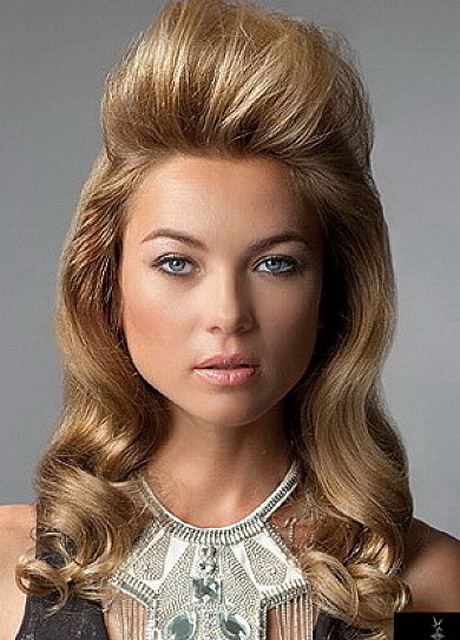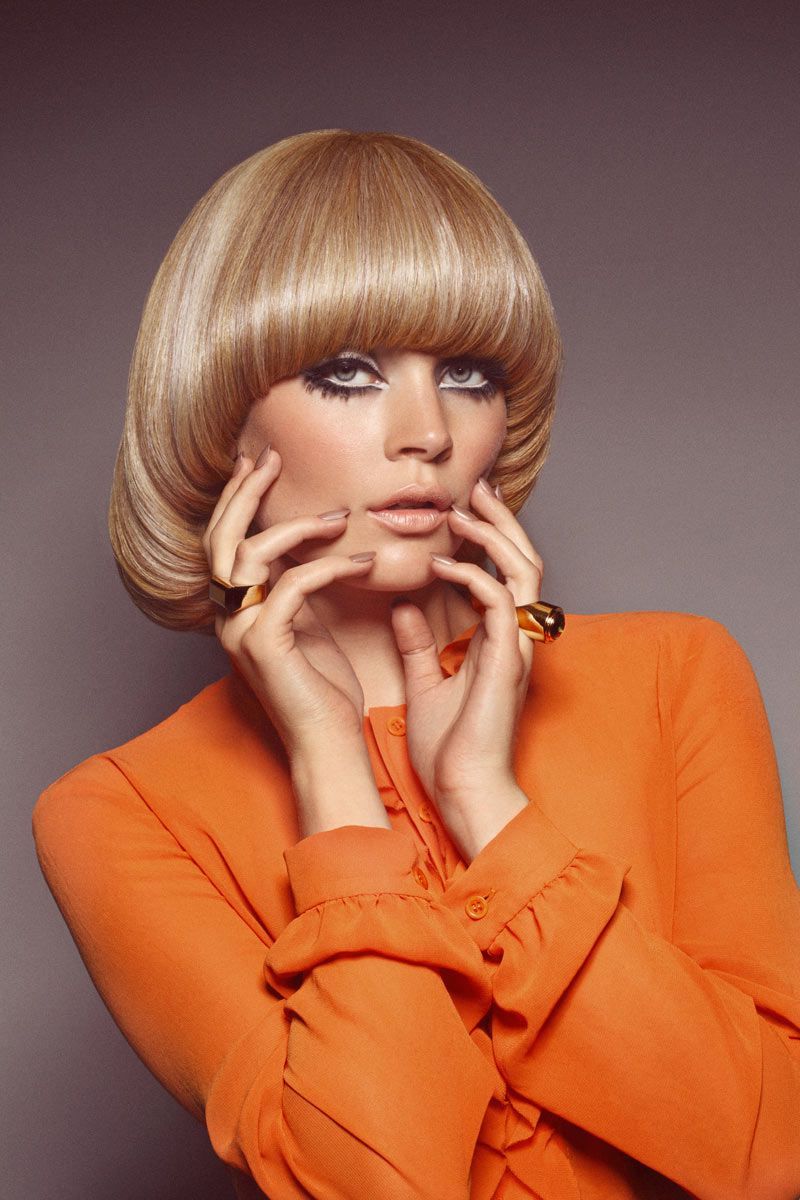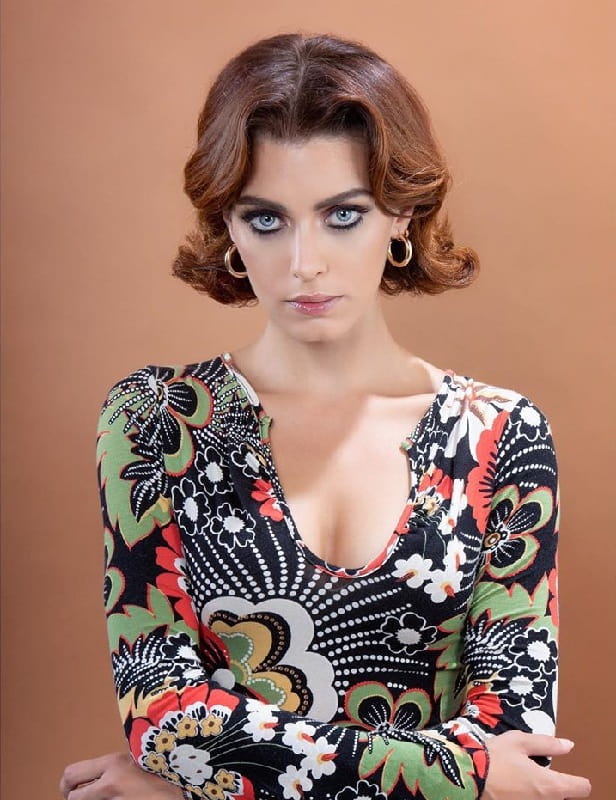Step back in time, if you will, to a decade that really, really knew how to express itself through hair. The 1970s, often simply called the '70s, began on January 1, 1970, and wrapped up on December 31, 1979. It was a time, you know, when fashion was rather expressive and quite fun, with people rocking everything from jump suits to hot pants. This period, it turns out, was also a true golden age for women's hair, offering up some of the most memorable and versatile styles we still admire.
If you're looking to capture that distinctive retro vibe, or perhaps just want to try something a little different with your appearance, 70s hairstyles for women provide a wealth of fantastic inspiration. Whether your hair is short, long, thick, or even on the thinner side, there’s pretty much a perfect look waiting for you. You can truly discover a style that fits your personal taste and is actually quite simple to bring to life.
This era, honestly, didn't do things by halves. From the free-spirited feel of long, flowing locks to the structured elegance of a classic bob, the seventies offered a hair adventure for everyone. We'll explore some of the most popular and timeless hairstyles from this amazing decade, giving you tips and, you know, some inspiration for easily recreating these truly fabulous looks right at home. So, let's get into it, shall we?
Table of Contents
- The Spirit of the Seventies and Its Hair
- Feathered Flair: The Iconic Look
- The Shag: A Layered Masterpiece
- Afro Power: Celebrating Natural Texture
- Curly Updos and Braids: Bohemian Beauty
- The Mullet: A Bold Statement
- Bobs with a 70s Twist
- Accessories That Complete the Look
- Why 70s Hairstyles Are Still Popular
- Frequently Asked Questions About 70s Hair
- Bringing the 70s Vibe to Your Hair
The Spirit of the Seventies and Its Hair
The 1970s, you know, were a period of really significant change and, frankly, quite a bit of unrest. There were big events like the fall of Saigon, the Soviet invasion of Afghanistan, and even the Munich massacre. Politically, it was a time when pop culture and politics actually collided, like on December 21, 1970, when Elvis Presley, the King of Rock 'n' Roll, visited President Richard Nixon in the White House Oval Office. As you explore the timeline of the 1970s, you'll find a decade marked by truly significant events, such as the Beatles’ end and the very start of personal computing. It was, in a way, a time when the reels of history were turning very quickly.
Amidst all this, women's rights were also gaining a lot of traction. In the 1970s, activists organized protests, formed groups like the National Organization for Women, and fought for the Equal Rights Amendment. This spirit of liberation and individuality, it's pretty clear, flowed right into fashion and, honestly, hair. People were looking for ways to express themselves, and their hairstyles became a powerful way to do that. The 70s didn't just give us great music, with artists like Van Morrison charting, but also some truly iconic hair trends. It was a time when personal style was really, really celebrated.
Feathered Flair: The Iconic Look
When you think about 70s hairstyles for women, the feathered look, sometimes called the "Farrah Fawcett flip," probably comes to mind first. This style, honestly, was everywhere and for good reason. It involves layers that are cut to frame the face, with the ends curled or brushed back and away from the face, giving a soft, airy, and, you know, very natural feel. It’s a versatile style that works beautifully on medium to long hair, creating a sense of movement and volume that was quite sought after.
The beauty of feathered hair is that it can be adapted. You can have a more subtle feathering around the face, or go for a really dramatic, full-on flip. It gives off a sense of effortless cool, almost like you just woke up looking amazing. This look, it's pretty clear, was about freedom and a certain kind of easygoing glamour. It truly captured the relaxed yet stylish mood of the decade, making it a timeless choice even today.
How to Get the Feathered Look
Recreating the feathered style is, honestly, simpler than it might seem. You'll need a good layered haircut first, one where the layers are designed to curve away from your face. Then, you'll typically use a round brush and a blow dryer. Take sections of your hair, lift them up, and brush them back and away from your face as you apply heat. The trick, you know, is to really focus on the ends, giving them that outward curl. A little hairspray can help hold the shape, too. For a more defined look, you could use large hot rollers or a curling iron on those front sections, curling them outward. It's a look that, in some respects, relies on a bit of technique but yields fantastic results.
The Shag: A Layered Masterpiece
Another hugely popular style from the 70s, and one that is still pretty relevant today, is the shag. This cut is all about layers, layers, and more layers, creating a truly choppy, textured look. It's shorter on top, with gradually longer layers as you go down, often with bangs that are also layered and a bit messy. The shag, honestly, gave off a very rock-and-roll, rebellious vibe, and it was embraced by musicians and everyday people alike. It's a look that, you know, suggests a certain kind of carefree attitude.
The shag is fantastic because it adds a lot of volume and movement without needing a ton of styling. It works well on a variety of hair types and lengths, from short to medium. It's a cut that, arguably, looks best when it's a little bit undone, giving it that effortless cool factor. This style, in a way, perfectly matched the expressive and fun fashion of the 70s, where people wore everything from turtlenecks to hot pants. It was about breaking away from more rigid styles and embracing something a bit wilder.
Styling Your Shag
Styling a shag is, quite frankly, pretty straightforward. The beauty of this cut is its built-in texture. You can simply air dry it with a little bit of texturizing spray or mousse to enhance those layers. If you want more volume, you can blow dry it upside down or use a diffuser. For that truly authentic 70s shag, try to keep it a little messy and undone. You might use a flat iron on just a few sections to create some piecey-ness, or perhaps scrunch it with some product for added wave. It’s a look that, you know, is meant to be easy and lived-in, not overly perfect.
Afro Power: Celebrating Natural Texture
The afro was, without a doubt, a truly powerful and significant hairstyle in the 1970s. It wasn't just a trend; it was a symbol of Black pride, identity, and cultural liberation. The afro celebrates natural hair texture, allowing it to grow out into a beautiful, voluminous cloud around the head. It truly embodied the spirit of the decade, a time when people were fighting for equal rights and expressing their individuality openly. This style, honestly, made a bold statement and remains an iconic look.
Afros come in various sizes and shapes, from tightly coiled and perfectly round to more relaxed and elongated. The key is to embrace your natural curl pattern and let your hair reach its full, glorious potential. This look, you know, was about confidence and a celebration of heritage. It really stood out as a beacon of self-acceptance and defiance against traditional beauty standards. It was, in some respects, a very visible representation of the decade's broader social movements.
Maintaining Your Afro
Keeping an afro looking its best involves proper care and hydration. Moisture is, frankly, very important for natural hair. Use leave-in conditioners and natural oils to keep your curls soft and defined. A wide-tooth comb or an afro pick is essential for shaping and adding volume without causing breakage. Sleeping on a satin pillowcase or wrapping your hair in a satin scarf can also help protect your style and reduce frizz. It’s a style that, you know, requires consistent care but truly shines when well-maintained. People wore their afros with immense pride, and, you know, the care routines reflected that dedication.
Curly Updos and Braids: Bohemian Beauty
The 70s also saw a surge in popularity for more relaxed, bohemian-inspired hairstyles, particularly curly updos and various braids. This was, in a way, part of the broader counter-culture movement, emphasizing natural beauty and a connection to nature. Think soft, flowing curls gathered loosely, or braids woven into intricate patterns, sometimes adorned with flowers or ribbons. These styles often had a very romantic and free-spirited feel, which was quite appealing. They were, you know, perfect for festivals and outdoor gatherings that were so characteristic of the time.
Curly updos often involved letting natural curls dictate the shape, rather than forcing them into a rigid style. Braids ranged from simple plaits to more complex fishtails or crown braids, often with pieces of hair left loose around the face to soften the look. These styles, honestly, showcased the versatility of hair and the desire for a more organic, less structured appearance. They were, pretty much, the antithesis of the highly coiffed looks of previous decades.
Creating Curly Updos
To create a 70s-inspired curly updo, start with naturally curly or curled hair. You might use a curling iron to enhance your curls if they need a little boost. Then, gather sections of your hair loosely, pinning them up with bobby pins, allowing some tendrils to fall around your face and neck. The key, you know, is to keep it looking soft and somewhat undone, not too perfect. For braids, experiment with different types: a simple side braid, a crown braid, or even multiple small braids woven into your hair. You can add hair scarves or fresh flowers for that extra touch of bohemian charm. It's a look that, in some respects, is about embracing a natural, relaxed beauty.
The Mullet: A Bold Statement
While often associated with the 80s, the mullet actually had its roots firmly planted in the 1970s. This bold style, famously "business in the front, party in the back," featured shorter hair on the top and sides, with significantly longer hair at the back. It was, honestly, a truly daring and unconventional choice, often adopted by those who wanted to stand out and challenge traditional norms. The mullet, you know, was a statement of individuality, and it certainly got people talking.
It was a style that, arguably, perfectly captured the experimental spirit of the decade. While it might seem a bit unusual to some now, at the time, it was seen as cutting-edge and rebellious. It allowed for versatility, offering a neat appearance from the front while still allowing for long hair in the back. This look, pretty much, showed that people in the 70s were willing to push boundaries with their personal style, just as they were with their fashion, wearing everything from hot pants to turtlenecks. It was about making an impact, you know, and the mullet certainly did that.
Bobs with a 70s Twist
The classic bob, a timeless haircut, also got a distinct 70s makeover. While still maintaining its signature blunt cut, 70s bobs often featured soft layering, particularly around the face, or a slightly longer length that skimmed the shoulders, sometimes referred to as a "long bob" or "lob." This gave the traditional bob a softer, more relaxed feel, moving away from the sharper, more structured bobs of earlier decades. It was, in a way, about making a classic feel fresh and modern for the time.
Some 70s bobs even incorporated subtle feathering at the ends, blending elements of two popular styles. This allowed for more movement and a less severe look. Whether it was a sleek, chin-length bob with a slight inward curl or a longer, more textured version, these bobs were, honestly, chic and easy to manage. They provided a polished look that still felt very much in tune with the decade's emphasis on natural beauty and comfort. It was, pretty much, a versatile choice for many women.
Accessories That Complete the Look
No 70s hairstyle for women was truly complete without the right accessories. Headbands, particularly wide, fabric ones or those with floral patterns, were incredibly popular. They added a touch of bohemian charm and could keep longer hair neatly in place. Scarves, too, were often woven into braids or tied around the head, adding color and texture. These accessories, you know, were not just functional but also a key part of the overall fashion statement.
Hair clips, often with simple designs or made from natural materials like wood, were also used to pin back sections of hair. Flowers, both fresh and artificial, were a common sight, especially at outdoor events, instantly adding that free-spirited, natural vibe. These small touches, honestly, could really elevate a simple hairstyle and make it distinctly 70s. They showed that, in a way, even the smallest details mattered when it came to personal expression during this vibrant decade.
Why 70s Hairstyles Are Still Popular
It's fascinating, really, how 70s hairstyles for women continue to capture our imagination today. Part of their enduring appeal, honestly, lies in their versatility and their inherent sense of freedom. These styles aren't overly rigid or complicated; they tend to be about embracing natural texture and movement. The feathered look, the shag, and even the afro, in some respects, offer a blend of effortless cool and distinct personality that resonates with modern trends. We are, you know, still drawn to that feeling of liberation that defined the decade.
Furthermore, many of these styles are surprisingly easy to adapt for contemporary wear. A modern shag might be a bit softer, or feathered layers might be more subtle, but the core essence remains. They offer a fantastic way to add volume, texture, and a touch of retro flair to your look without feeling like a costume. As a matter of fact, the 70s were a time when pop culture and politics really collided, and that spirit of individuality, it turns out, is something we still value deeply in our personal style. So, it's almost natural that these looks continue to inspire us, offering a timeless blend of comfort and chic.
Frequently Asked Questions About 70s Hair
People often have questions about how to achieve or understand these iconic looks. Here are some common queries, you know, that might help you on your hair journey.
What was the most popular hairstyle in the 70s for women?
Honestly, the feathered hair, often called the "Farrah Fawcett flip," was arguably the most popular and recognizable hairstyle for women in the 1970s. It was everywhere, and for a very good reason. It gave off a sense of effortless glamour and was widely imitated. So, it's pretty clear, that was a huge one.
How do you get 70s volume in your hair?
Achieving that signature 70s volume often involves a few key techniques. Backcombing at the roots can help, as can using a round brush with a blow dryer to lift sections of hair away from the scalp. Large rollers, hot rollers specifically, were also very popular for creating big, bouncy curls and overall fullness. Products like volumizing mousse or hairspray were, pretty much, essential too. It’s about building height and body, you know, especially around the crown.
What are the key characteristics of 70s hairstyles?
The key characteristics of 70s hairstyles for women generally include a focus on movement, layers, and embracing natural textures. You see a lot of feathered ends, shaggy cuts with varying lengths, and big, voluminous afros. There's also a strong emphasis on a more relaxed, bohemian feel, often with long, flowing hair or soft updos. It was, in a way, about expressing individuality and having hair that felt free and easy, reflecting the broader social changes of the decade.
Bringing the 70s Vibe to Your Hair
As you can see, the 1970s offered a truly incredible range of hairstyles for women, each with its own unique charm and story. From the iconic feathered look to the rebellious shag, the powerful afro, and the soft, bohemian braids, there's so much to explore. These styles, honestly, weren't just about looking good; they were about expressing who you were in a decade that was all about change and self-discovery. The 70s didn't do things by halves, and that certainly extended to hair.
Whether you're looking for a dramatic change or just a subtle nod to the past, recreating these fabulous looks can be a lot of fun. You can find a retro style that truly suits you and bring a piece of that expressive, fun 70s fashion into your modern life. It's about playing with volume, texture, and movement, and, you know, making a statement with your hair. Learn more about fashion history on our site, and for more hair ideas, link to this page . You can also explore more about the 1970s by selecting a category on the History.com 1970s timeline. So, why not give one of these timeless looks a try?



